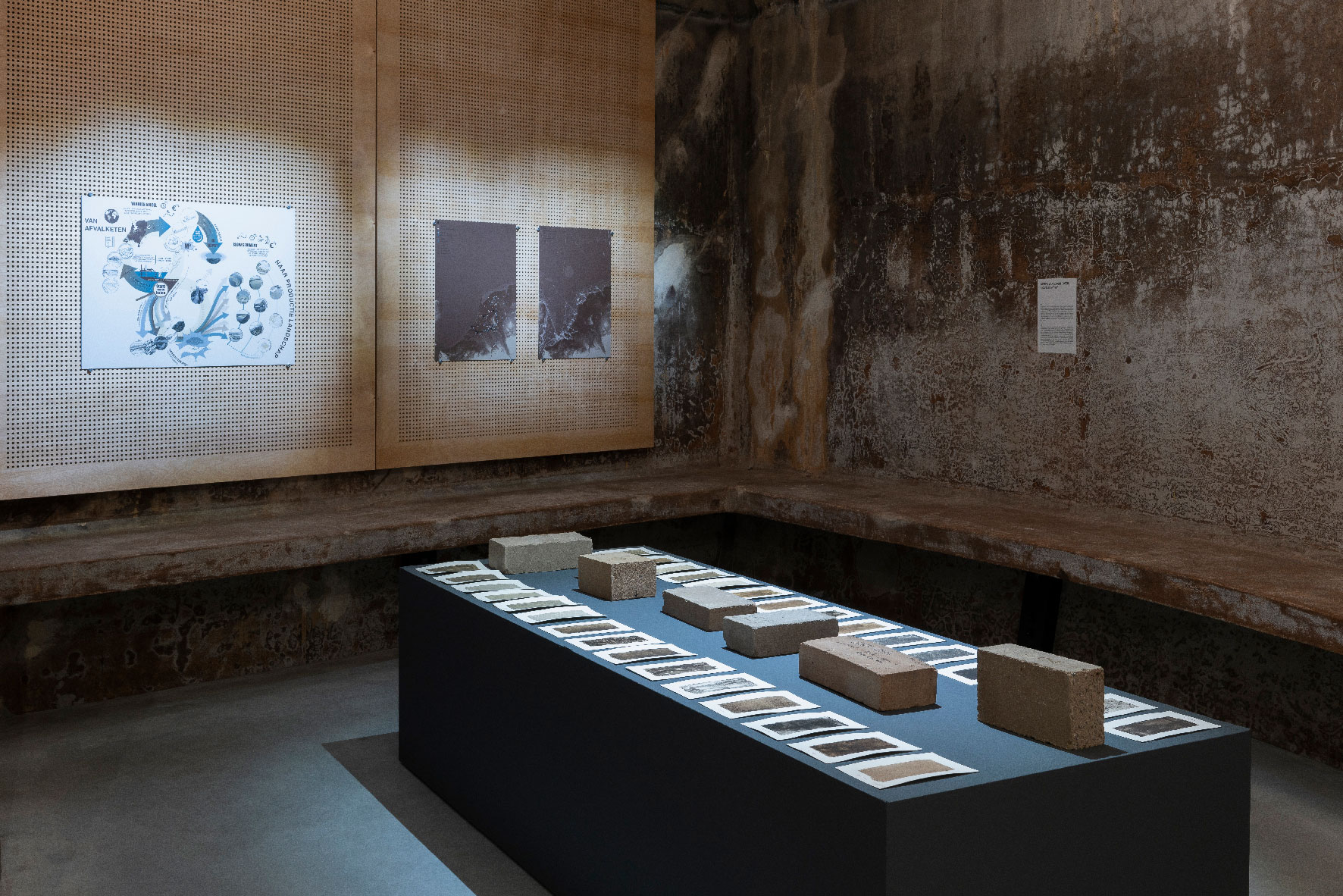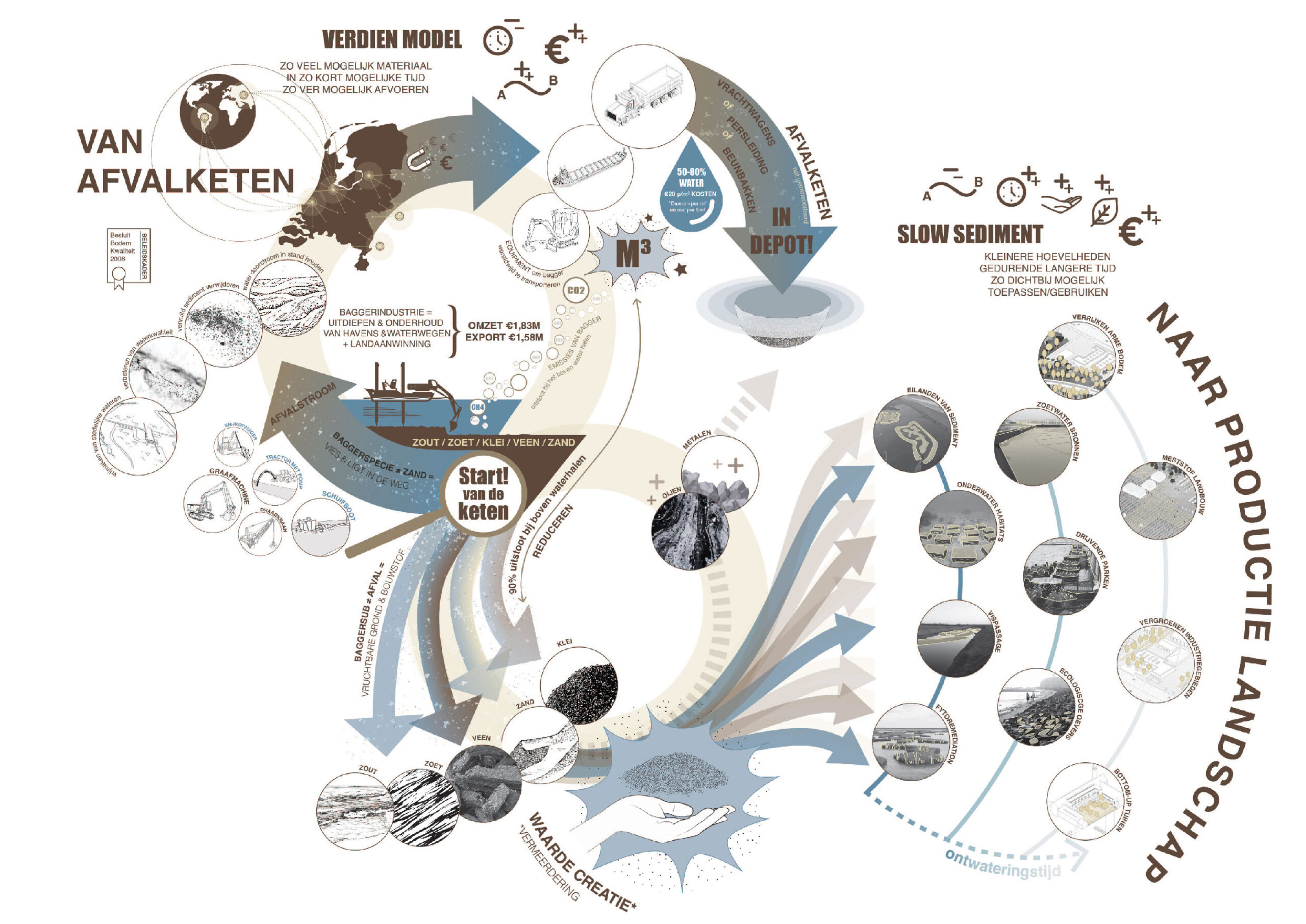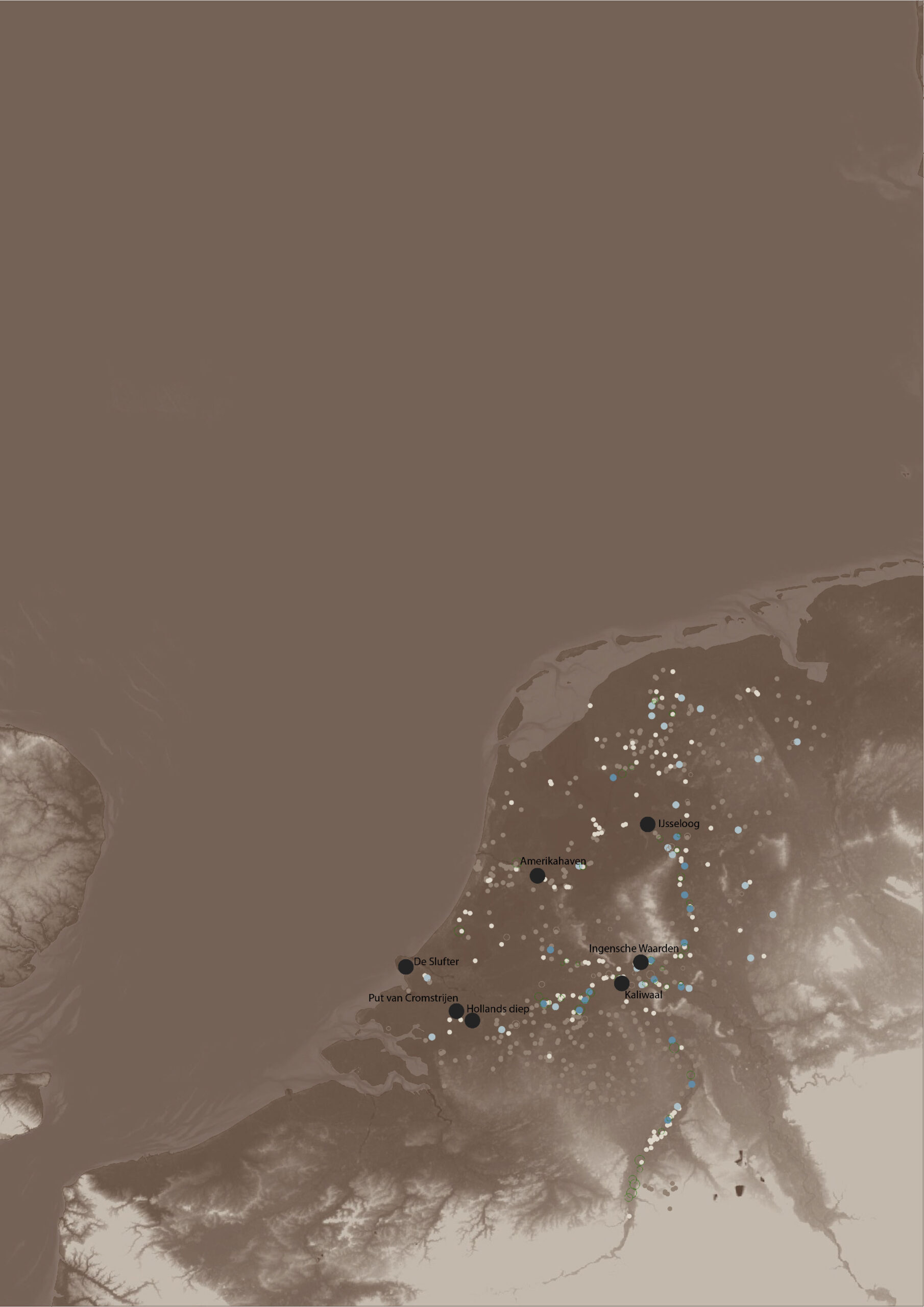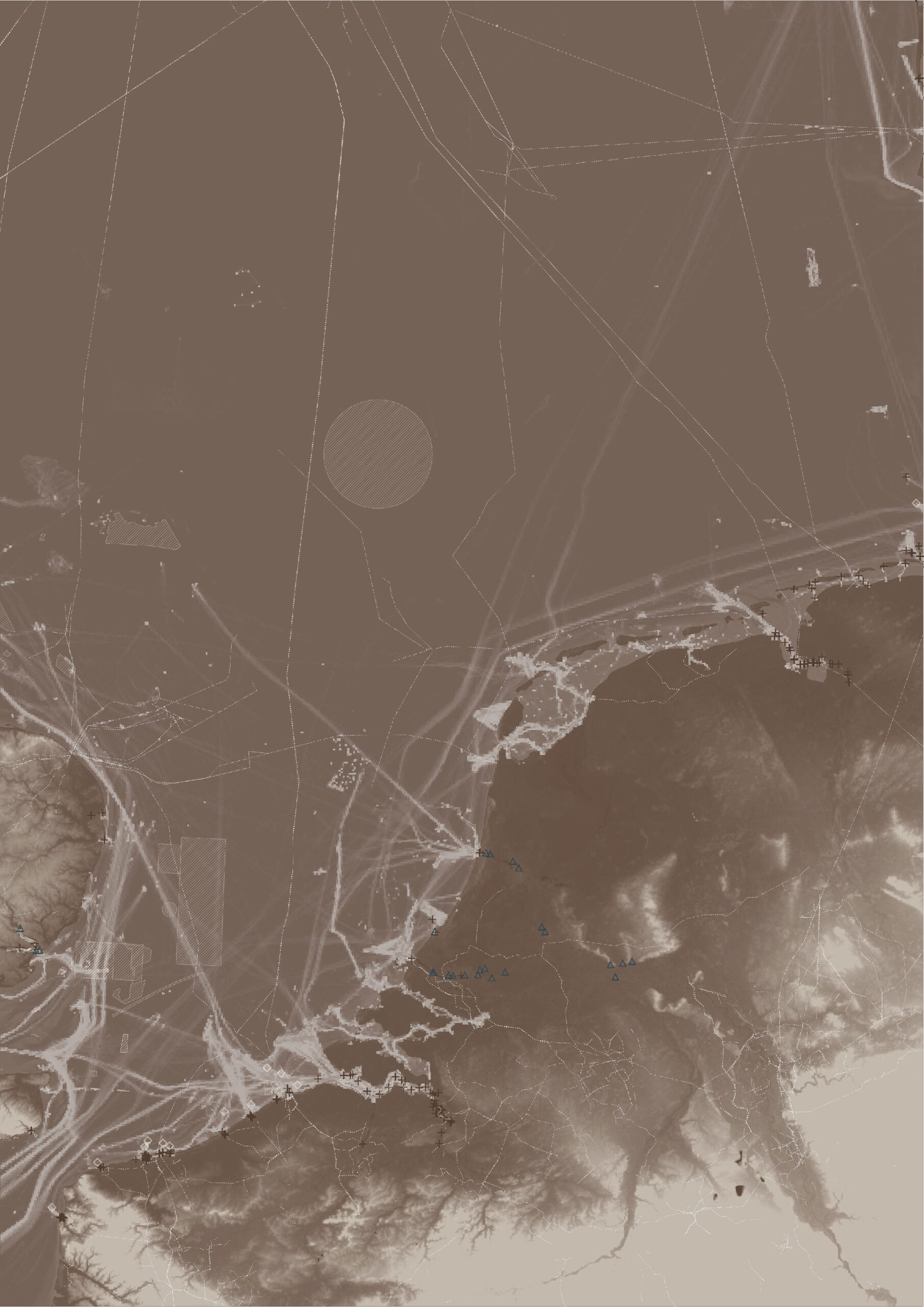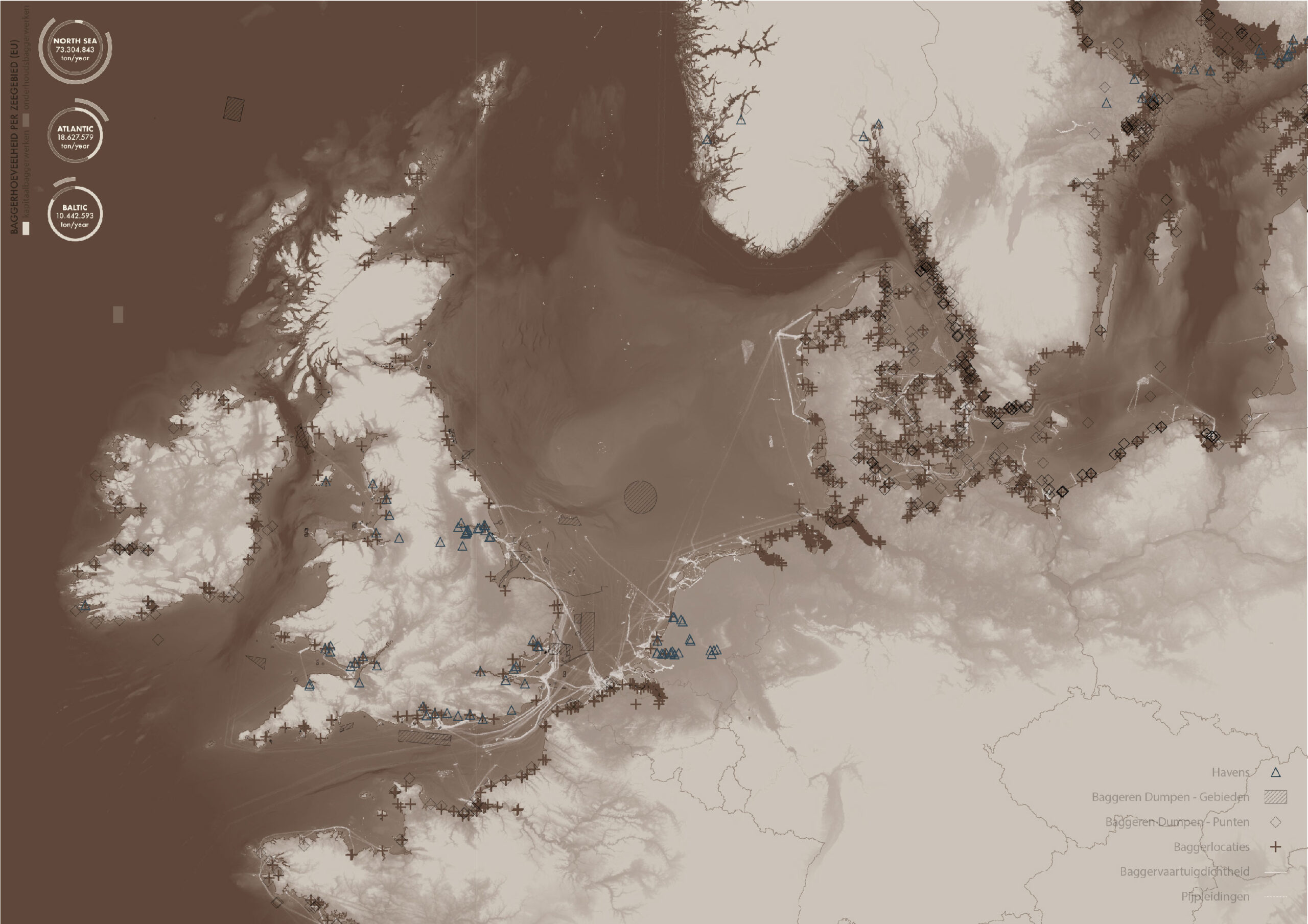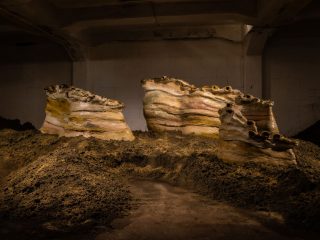Dredging Industry
We plead for a dredging industry that is treating sediment as a raw material instead of waste. In this infographic we mapped the opportunities and (im)possibilities to restructure the dredging industry to become more sustainable. With the factor time playing a prominent role in new possible futures.
The dredging industry revolves around the maintenance of harbors and waterways and land reclamation projects. The industry is focused on transporting as much dredging material over as many kilometers as possible. The current economic value is calculated in cubic meters, which contains not only earth, but also a big amount of water. Next to this there is also a lack of vision on a policy level about the possible added of the industry in the spatial domain. Current laws and regulations are regarding the dredging industry as a waste chain.
This infographic shows the current dredging industry as waste-chain (circle 1 on the left), but counters that with opportunities for a circular dredging industry (circle 2 on the right) In which the resource is valued as a raw material, which can be applied for new spatial, ecological and economical purposes.
Mapping the industry
On the scale of the Netherlands, we look at the dredging industry from two perspectives; the dredging activity and the destination of dredging sediment. Projecting this data on a map shows how dredging activity is concentrated into two directions.
- From harbors and estuaries dredging sediment is being dragged to the sea, to afterwards steadily flow back to these locations.
- From rivers and channels dredging sediment is transported to former excavation pits and depots, which forms the end of the chain. The material ends up in holes in the landscapes.
Characteristics of the material
To get a grip on the material and form an understanding of the different compositions of the material we analyzed eight sludge samples. Below the different varieties have been listed. Proportionally the ratio peat, clay, sand can differ a lot. This also influences the possible applications.
The material can only be classified as building material when the total amounts of silicon, calcium and aluminum combined are not more than 10 percent of the total weight. (Ministry of public housing, spatial planning and environmental management, 2007).


